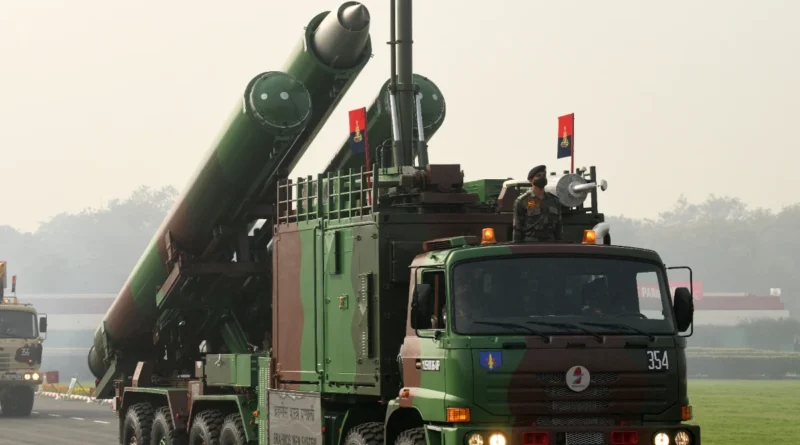India-Pakistan Conflict: PM Modi Hails Indigenous Weapons Used in Precision Strikes During ‘Operation Sindoor’
In a 21-minute national address, Prime Minister Narendra Modi praised Indian-made weapons used in Operation Sindoor, a series of “precise and balanced” strikes targeting nine terrorist camps in Pakistan and Pakistan-occupied Kashmir (PoK). His address came four days after both India and Pakistan launched a series of retaliatory operations following the April 22 Pahalgam terror attack, which claimed 26 lives. Prior to this, Foreign Secretary Vikram Misri had termed the Pahalgam assault as the primary escalation.
At the core of Operation Sindoor was a lethal combination of indigenously developed and co-produced weapons, showcasing India’s growing defense self-reliance. The operation was spearheaded by platforms such as the BrahMos supersonic cruise missile, Sukhoi-30 MKI jets, the Akash and Barak-8 missile systems, and the formidable Russian-made S-400 air defense system. Supported by a robust integrated air defense network and real-time command and control infrastructure, India not only launched a destructive offensive but also successfully neutralized retaliatory drone and missile attacks.
D4 Anti-Drone System: India’s Shield Against UAV Threats
The D4 system—short for Detect, Deter, and Destroy Drones—played a pivotal role during the conflict, effectively neutralizing Pakistani drones using a combination of electronic jamming, spoofing, and possibly laser-based kill mechanisms. Developed by DRDO, this indigenous system was deployed to counter kinetic and non-kinetic aerial threats, including both conventional drones and unmanned combat aerial vehicles (UCAVs).
BrahMos: The Supersonic Missile That Shook Pakistan
On the morning of May 10, India launched multiple air and ground versions of the BrahMos missile, targeting key Pakistani airbases including the highly secured Nur Khan facility. The Indo-Russian developed BrahMos, now manufactured domestically, carries a 200–300 kg warhead and travels at Mach 3 speeds with an operational range of 300–600 km. Though officially listed with a 3-meter CEP (circular error probability), the missile reportedly achieved near 1-meter precision during the strikes. Its adaptability allows it to be launched from land-based platforms, ships, submarines, and aircraft such as the Sukhoi-30 MKI.
Sukhoi-30 MKI: The Delivery Platform of Devastation
The HAL-built Sukhoi-30 MKI fighters were instrumental in Operation Sindoor. Each aircraft, capable of carrying a BrahMos missile and flying up to 11 hours with mid-air refueling, dramatically enhanced India’s strike capability. Their integration with BrahMos allowed pinpoint strikes, rendering enemy radars and air defense units ineffective.
Barak-8 & MRSAM: Multi-Layered Defense of the Homeland
While BrahMos missiles obliterated Pakistani targets, India’s multi-layered missile defense systems thwarted incoming threats. On May 8 and 9, Pakistan retaliated with drone swarms and Fateh-2 guided rockets, all of which were intercepted by a network of Barak-8, Akash, and S-400 systems. Jointly developed by DRDO and Israel Aerospace Industries, Barak-8 can intercept aerial threats at ranges of 70–80 km and offers supersonic speed and dual radar guidance for precision tracking and interception.
Akash: India’s Indigenous Air Defense Workhorse
Developed under the Integrated Guided Missile Development Program (IGMDP), the medium-range Akash missile system was crucial during Operation Sindoor. The newer Akash-NG variant, with improved range and performance, successfully intercepted multiple drone swarms and missile threats. With speeds up to Mach 2.5 and a ceiling of 20 km, Akash is now a reliable backbone for the Indian Air Force and Army.
IACCS: The Brain Behind the Shield
The Integrated Air Command and Control System (IACCS), developed in collaboration with Bharat Electronics Limited, provided the operational backbone of India’s air defense. This automated battlefield management system integrates radar, sensors, airborne warning systems, and intelligence to generate a comprehensive Recognized Air Situation Picture (RASP). Operating from a classified underground facility, IACCS enabled coordinated detection and interception of cross-border threats before they could cause damage.
“A Self-Reliant War”
Former DRDO chief G. Satheesh Reddy commended the effective deployment of indigenous technologies during the conflict, stating, “This was a self-reliant war… DRDO and industry-developed anti-drone systems were used very successfully to counter a massive drone threat.”
India’s strategic response during Operation Sindoor highlights a significant shift in its defense posture — relying heavily on domestically developed technology, real-time battlefield intelligence, and precision warfare capabilities.
Stay updated with Latest National News in Hindi on Prabhasakshi

